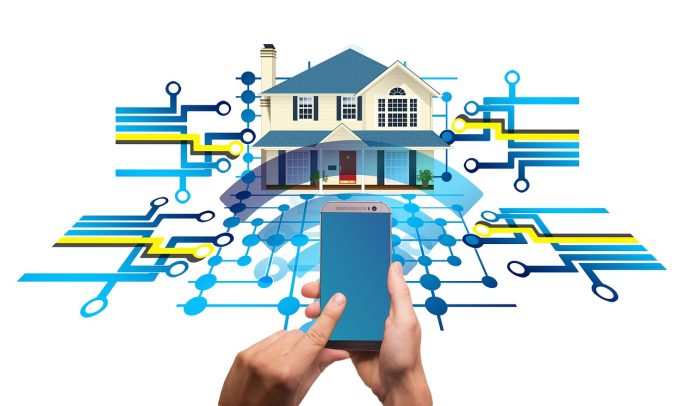You can’t really put a price on the convenience smart home devices offer. Smart light bulbs, for instance, let you set the perfect ambience for your home without leaving your couch. Connected thermostats learn your preferences and help cut down on energy bills, while video doorbells let you screen visitors (or politely avoid solicitors) from anywhere in the world.
Each of these gadgets is impressive on its own, but the real benefits come when they work together. In this guide, we’ll offer some tips to help you get them working in perfect harmony and make the most out of your smart home setup.
Select an Ecosystem
The first step in creating your smart home is deciding on a home ecosystem. This ecosystem allows all your devices to communicate and work together seamlessly. While there are several options out there, the three main players are Amazon, Google, and Apple. Each has its strength and weaknesses, so here’s a quick rundown:
- Google: If you prioritize compatibility with a wide range of devices and AI-powered automation, this might be the perfect fit, especially if you’re already an Android user.
- Amazon: It’s a great middle-of-the-road option if you have a mix of Android and iOS devices. Plus, Amazon’s entry-level Echo devices are budget-friendly, making it an affordable choice for those just starting out.
- Apple: If most of your devices are already iPhones and iPads, staying within the Apple ecosystem is a smart move.
Establish a Hub
If you’re just dipping your toes into the smart home waters with a couple of devices (like a smart thermostat and a video doorbell), your smartphone can do the job just fine. But if you’re looking to create a more complex setup with various components from different manufacturers, a smart hub might be your best bet.
A smart hub lets you control all your devices from a single point, so you’re not constantly switching between different apps on your phone. Juggling multiple apps can actually make your smart home setup less convenient, which defeats the purpose of having a smart home in the first place.
For a basic setup, a smart speaker like Amazon Echo or Google Home can often handle your needs. But if you’re going for a more advanced setup, especially with location-based automations – like actions triggered when you approach your home – you’ll want a dedicated smart hub. Options like Samsung SmartThings or Wink can handle more complex scenarios and integrate a broader range of devices.
Set Up Your Network and Connectivity

Your smart home is only as good as the network it runs on – so make sure you have ample bandwidth and a powerful connection. Each smart device in your home will be communicating with the Internet, and while each device uses only a small portion of your bandwidth, it all adds up. You definitely don’t want your smart assistant slowing down your streaming experience just because it’s fetching tomorrow’s weather forecast.
Equally important is a reliable Internet connection. If your connection crashes, your entire smart home setup goes with it. To keep everything running smoothly, choose a router that can handle sustained speeds for multiple devices. If you already have dead zones in your home, consider upgrading to a mesh Wi-Fi network. Mesh routers are easier to set up and handle network congestion and interference better than regular routers. Plus, they offer superior Wi-Fi performance for mid-sized, large, and multi-story homes.
Another key element for a strong smart home foundation is ensuring your computer runs smoothly. You often use your computer to configure and manage network settings, like setting up your router, Wi-Fi networks, and smart home devices. Misconfigured firewall settings can block communication between your computer and smart home devices. So, configure your firewall to allow necessary traffic for smart home applications. Check your device manuals for specific port and protocol requirements, or save time by considering in-home computer repair services.
Choose Your Automation Approach
When it comes to automating your home, you generally have two main options. You can start small, adding one or two devices at a time and gradually building your setup. Or, you can go all-in from the start, picking up a smart hub and a range of devices at once.
Of course, your choice will largely depend on your budget. Starting small can be as simple as a smart speaker with voice control capabilities and a couple of smart light bulbs. This initial setup could cost you as little as $100-$200, making it an accessible entry point for most budgets.
A more comprehensive setup, on the other hand, might include a smart hub, video doorbell, smart thermostat, smart garage door opener, and multiple smart lights and switches. Depending on the number and quality of devices, you could be looking at an initial investment of $500-$1500 or more.
Take a moment to reflect on what you want your smart home to do for you. Are you aiming for a few basic automations and voice commands to simplify your daily routine? Or are you dreaming of a full smart home overhaul that makes your place the most tech-savvy around? There’s no wrong or right answer; it all depends on your needs, preferences, and budget.






